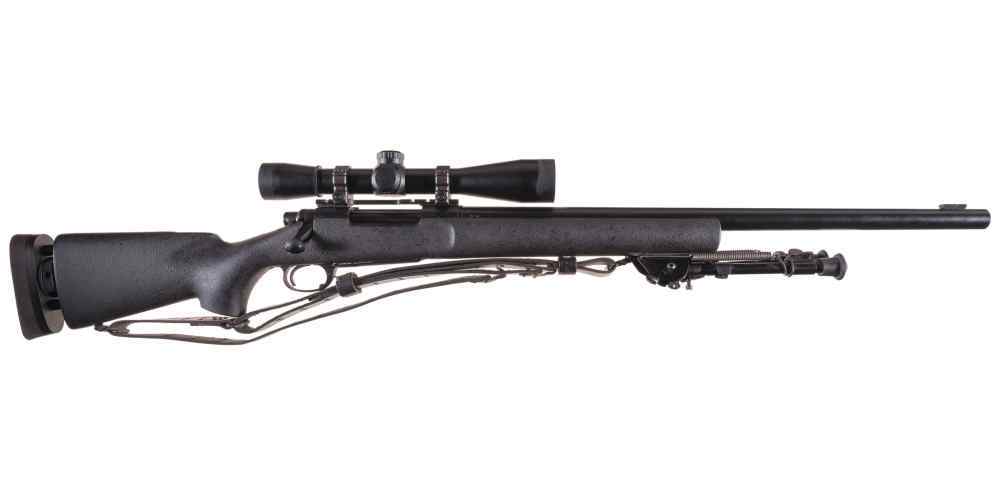“Rifle stocks: Evolving warfare one shot at a time.”
Importance of Rifle Stocks in Improving Accuracy
Rifle stocks have played a crucial role in the evolution of military firearms. These essential components not only provide stability and support for the shooter but also significantly impact the accuracy and effectiveness of the weapon. In this article, we will explore the importance of rifle stocks in improving accuracy and how they have contributed to the advancement of military technology.
One of the primary functions of a rifle stock is to provide a stable platform for the shooter to hold and aim the weapon. By absorbing recoil and reducing muzzle rise, a well-designed stock allows the shooter to maintain control and stay on target during rapid fire. This stability is essential for achieving accurate and consistent shots, especially in high-pressure combat situations.
In addition to stability, rifle stocks also play a crucial role in ergonomics. A comfortable and properly fitted stock can help reduce shooter fatigue and improve overall performance. By providing a secure grip and proper alignment of the shooter’s eye with the sights, a well-designed stock can enhance accuracy and precision.
Furthermore, rifle stocks can be customized to fit the individual shooter’s preferences and shooting style. Adjustable stocks allow for personalized adjustments to length of pull, cheek weld, and other factors that can affect accuracy. By tailoring the stock to the shooter’s specific needs, it is possible to achieve optimal performance and maximize accuracy.
The design and materials used in rifle stocks have evolved over time to meet the changing needs of military forces. Early rifle stocks were typically made of wood, which provided durability and a traditional aesthetic. However, wood stocks were prone to warping and swelling in extreme conditions, which could affect accuracy and reliability.
In response to these limitations, modern rifle stocks are often made of synthetic materials such as polymer or fiberglass. These materials are lightweight, durable, and resistant to environmental factors, making them ideal for military use. Synthetic stocks can also be molded into complex shapes and designs, allowing for improved ergonomics and customization.
Another important aspect of rifle stocks is their role in weapon modularity. Many modern military rifles are designed with interchangeable stocks that allow for quick and easy customization. This modularity enables soldiers to adapt their weapons to different mission requirements, from close-quarters combat to long-range precision shooting.
In conclusion, rifle stocks are essential components of military firearms that play a crucial role in improving accuracy and performance. By providing stability, ergonomics, and customization options, rifle stocks contribute to the effectiveness of military forces in combat situations. As technology continues to advance, we can expect to see further innovations in rifle stock design that will further enhance the capabilities of military firearms.

Evolution of Rifle Stocks in Military History
Rifle stocks have played a crucial role in the evolution of military weaponry throughout history. From the early days of muskets to the modern assault rifles used by soldiers today, the design and functionality of rifle stocks have continuously evolved to meet the changing needs of warfare.
In the early days of firearms, muskets were equipped with simple wooden stocks that provided stability and support for the shooter. These stocks were often made of walnut or other hardwoods and were designed to absorb the recoil of the weapon. While effective for their time, these early rifle stocks were basic in design and did not offer much in terms of customization or ergonomics.
As firearms technology advanced, so too did the design of rifle stocks. During the 19th century, the introduction of breech-loading rifles led to the development of more sophisticated stocks that were designed to improve accuracy and handling. These stocks were often made of higher quality materials such as steel or aluminum and featured adjustable components that allowed shooters to customize their weapons to fit their individual preferences.
The invention of the bolt-action rifle in the late 19th century further revolutionized the design of rifle stocks. Bolt-action rifles were more accurate and reliable than their predecessors, and the stocks were redesigned to accommodate the new firing mechanism. Stocks were now designed with a straighter comb and a more pronounced pistol grip, allowing for better control and accuracy when firing.
The early 20th century saw the rise of semi-automatic rifles, which further changed the design of rifle stocks. Semi-automatic rifles were capable of firing multiple rounds with each pull of the trigger, and the stocks were redesigned to provide better stability and control during rapid fire. Stocks were now equipped with features such as adjustable cheek rests and butt plates, allowing shooters to customize their weapons for maximum comfort and accuracy.
The development of the assault rifle in the mid-20th century marked another milestone in the evolution of rifle stocks. Assault rifles were designed for close-quarters combat and were equipped with folding or collapsible stocks that allowed for easier maneuverability in tight spaces. These stocks were also designed to be lightweight and durable, making them ideal for use in combat situations.
Today, rifle stocks continue to evolve with advancements in technology and materials. Modern rifle stocks are often made of synthetic materials such as polymer or carbon fiber, which are lightweight and durable. These stocks are designed to be adjustable and customizable, allowing shooters to tailor their weapons to fit their individual needs and preferences.
In conclusion, rifle stocks have played a vital role in the evolution of military weaponry. From the simple wooden stocks of muskets to the advanced synthetic stocks of modern assault rifles, the design and functionality of rifle stocks have continuously evolved to meet the changing needs of warfare. As technology continues to advance, we can expect to see further innovations in the design of rifle stocks that will continue to improve the accuracy, reliability, and effectiveness of military firearms.
Impact of Rifle Stocks on Soldier Comfort and Ergonomics
Rifle stocks have played a crucial role in the evolution of military firearms, particularly in terms of soldier comfort and ergonomics. The design and functionality of rifle stocks have significantly impacted the way soldiers handle and operate their weapons on the battlefield. In this article, we will explore the importance of rifle stocks in enhancing soldier performance and effectiveness in combat situations.
One of the key benefits of a well-designed rifle stock is its ability to improve the comfort and ergonomics of the weapon. A comfortable and ergonomic rifle stock allows soldiers to maintain a stable shooting position for extended periods, reducing fatigue and improving accuracy. The shape and size of the stock can be customized to fit the individual soldier’s body, ensuring a proper fit and optimal shooting posture.
In addition to comfort, rifle stocks also play a crucial role in recoil management. A good rifle stock absorbs and disperses the recoil energy generated by firing the weapon, reducing the impact on the shooter’s shoulder and improving overall control. This is particularly important in high-stress combat situations where quick follow-up shots may be necessary.
Furthermore, rifle stocks can also impact the overall balance and handling of the weapon. A well-balanced rifle with a properly designed stock allows for quick and precise target acquisition, making it easier for soldiers to engage multiple targets in rapid succession. The weight distribution of the stock can also affect the overall maneuverability of the weapon, allowing soldiers to move and transition between shooting positions more efficiently.
Another important aspect of rifle stocks is their ability to enhance weapon customization and modularity. Many modern rifle stocks are designed to accommodate various accessories and attachments, such as optics, lights, and grips. This allows soldiers to tailor their weapons to meet specific mission requirements and personal preferences, improving overall performance and versatility on the battlefield.
Overall, the role of rifle stocks in military evolution cannot be understated. From improving soldier comfort and ergonomics to enhancing weapon balance and customization, rifle stocks play a crucial role in shaping the way soldiers handle and operate their firearms in combat situations. As technology continues to advance, we can expect to see further innovations in rifle stock design that will further enhance soldier performance and effectiveness on the battlefield.
Role of Rifle Stocks in Enhancing Weapon Stability and Control
Rifle stocks have played a crucial role in the evolution of military weaponry, particularly in enhancing weapon stability and control. The design and functionality of rifle stocks have evolved over the years to meet the changing needs of soldiers on the battlefield. In this article, we will explore the importance of rifle stocks in military operations and how they have contributed to the effectiveness of modern firearms.
One of the primary functions of a rifle stock is to provide stability and control to the shooter. A well-designed rifle stock allows the shooter to maintain a steady aim and absorb recoil, resulting in more accurate and consistent shots. The shape and material of the stock play a significant role in achieving this stability. Stocks made from high-quality materials such as wood, polymer, or composite materials offer better durability and shock absorption, reducing the impact of recoil on the shooter’s shoulder.
In addition to stability, rifle stocks also play a crucial role in controlling the weapon during firing. The ergonomics of the stock, including the length of pull, cheek weld, and grip angle, all contribute to the shooter’s ability to handle the weapon effectively. A comfortable and properly fitted stock allows the shooter to maintain a natural shooting position, reducing fatigue and improving overall accuracy. Adjustable stocks have become increasingly popular in modern firearms, allowing shooters to customize their weapon to fit their individual preferences and shooting style.
The evolution of rifle stocks has also led to the development of specialized stocks for different types of firearms and shooting scenarios. For example, sniper rifles often feature adjustable cheek rests and butt pads to provide maximum comfort and precision for long-range shooting. Tactical rifles may have collapsible or folding stocks for easy transport and maneuverability in tight spaces. Each type of stock is designed to enhance the performance of the weapon in specific situations, giving soldiers the flexibility to adapt to changing combat conditions.
Another important aspect of rifle stocks is their role in weapon customization and accessorization. Many modern rifle stocks come with built-in features such as sling mounts, Picatinny rails, and storage compartments for added functionality. These accessories allow shooters to attach additional equipment such as scopes, lights, and bipods, enhancing the versatility of the weapon in different environments. Customizable stocks also give soldiers the ability to tailor their weapon to meet their specific needs and preferences, improving overall performance on the battlefield.
In conclusion, rifle stocks play a vital role in enhancing weapon stability and control in military operations. The design and functionality of rifle stocks have evolved over time to meet the changing demands of modern warfare, providing soldiers with the tools they need to succeed in combat. From providing stability and control to allowing for customization and accessorization, rifle stocks are an essential component of any firearm. As technology continues to advance, we can expect to see further innovations in rifle stock design that will further improve the effectiveness of military weaponry.
Future Trends in Rifle Stock Design for Military Applications
Rifle stocks have played a crucial role in the evolution of military firearms over the years. These essential components not only provide a stable platform for aiming and firing but also contribute to the overall ergonomics and handling of the weapon. As technology continues to advance, the design and materials used in rifle stocks are constantly evolving to meet the changing needs of modern warfare.
One of the key trends in rifle stock design for military applications is the use of advanced materials such as carbon fiber and polymer composites. These materials offer significant advantages over traditional wood or metal stocks, including increased durability, lighter weight, and improved resistance to harsh environmental conditions. By incorporating these materials into rifle stock design, manufacturers are able to produce weapons that are more reliable and easier to handle in the field.
Another important trend in rifle stock design is the incorporation of adjustable features to accommodate a wide range of shooters. Adjustable length of pull, cheek risers, and butt pads allow soldiers to customize their rifle stocks to fit their individual preferences and body types. This not only improves comfort and accuracy but also ensures that the weapon can be effectively used by a diverse range of personnel.
In addition to adjustable features, rifle stocks are also being designed with modularity in mind. This allows for easy customization and upgrades, such as the addition of accessories like bipods, slings, and optics. By designing rifle stocks with modular components, manufacturers are able to create weapons that can be easily adapted to different mission requirements without the need for extensive modifications.
One of the most exciting developments in rifle stock design is the integration of advanced technologies such as sensors and actuators. These technologies can provide real-time feedback on weapon performance, recoil management, and shooter biometrics. By incorporating sensors into rifle stocks, soldiers can receive valuable data that can help improve their marksmanship and overall effectiveness in combat situations.
As military technology continues to advance, the role of rifle stocks in modern warfare will only become more important. By incorporating advanced materials, adjustable features, modularity, and cutting-edge technologies, manufacturers are able to create weapons that are more reliable, accurate, and versatile than ever before. The evolution of rifle stock design is a testament to the ongoing commitment to innovation and excellence in the field of military firearms.
In conclusion, rifle stocks play a critical role in the evolution of military firearms. By incorporating advanced materials, adjustable features, modularity, and advanced technologies, manufacturers are able to create weapons that are more reliable, accurate, and versatile than ever before. The future of rifle stock design for military applications is bright, with continued advancements in technology and innovation driving the development of weapons that are truly state-of-the-art.




